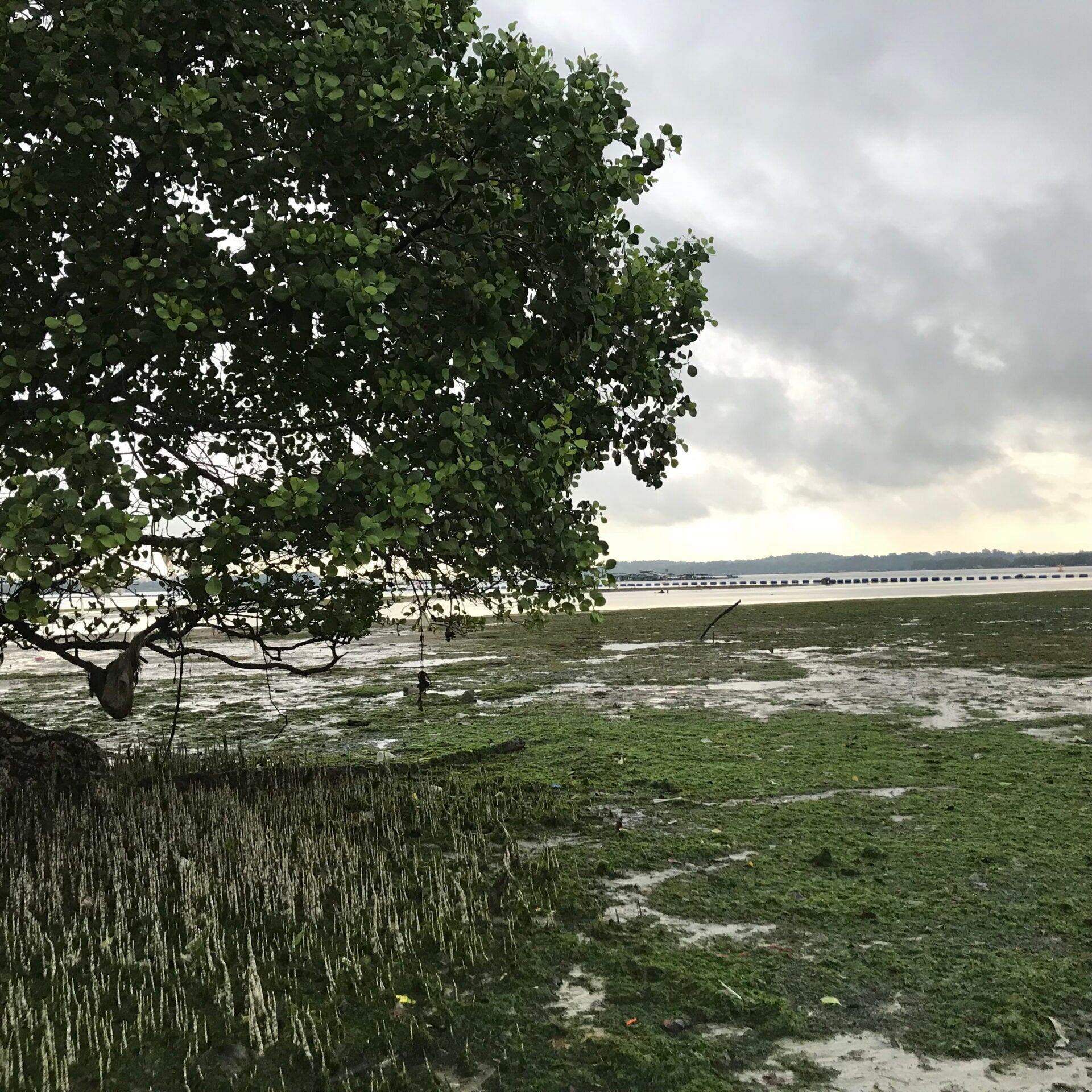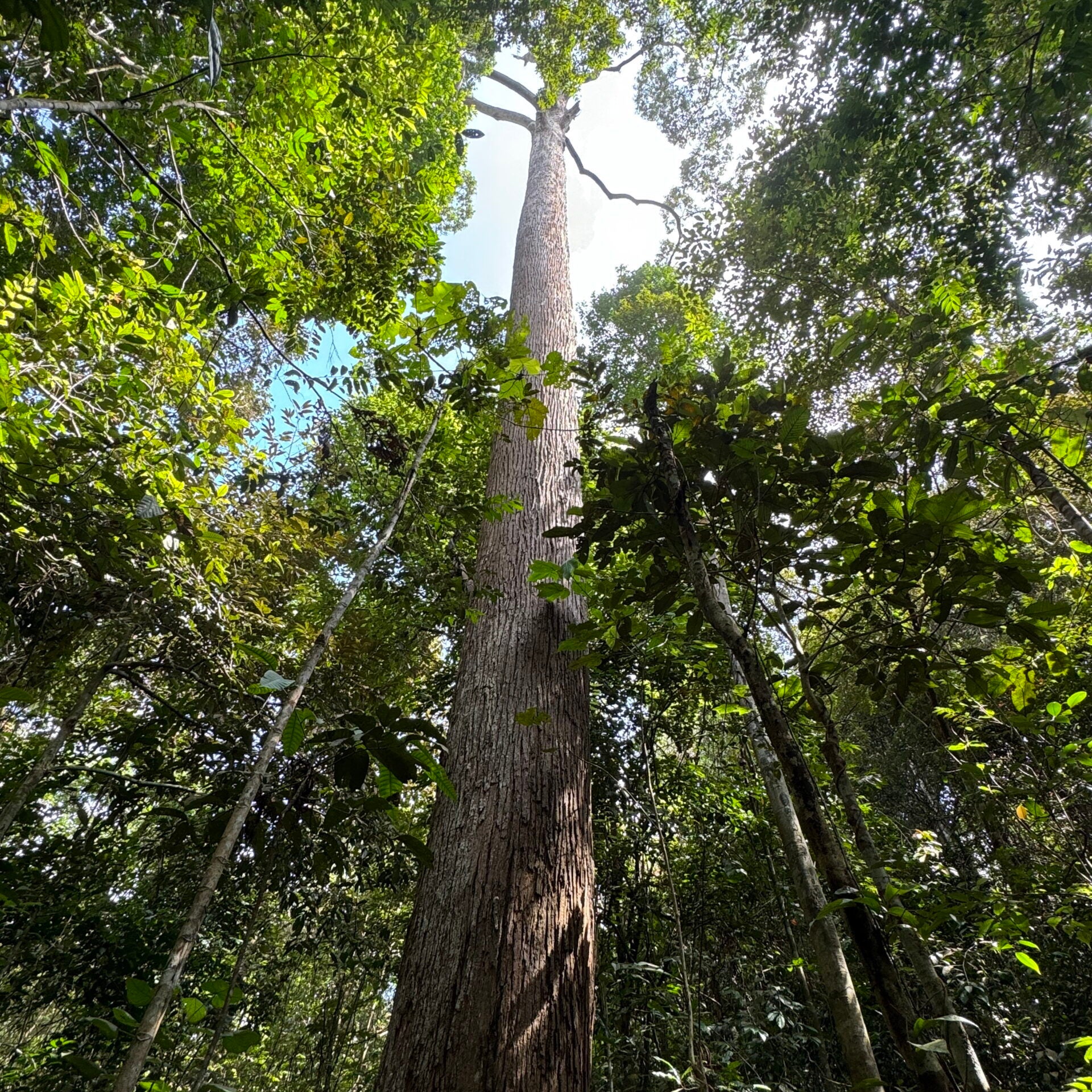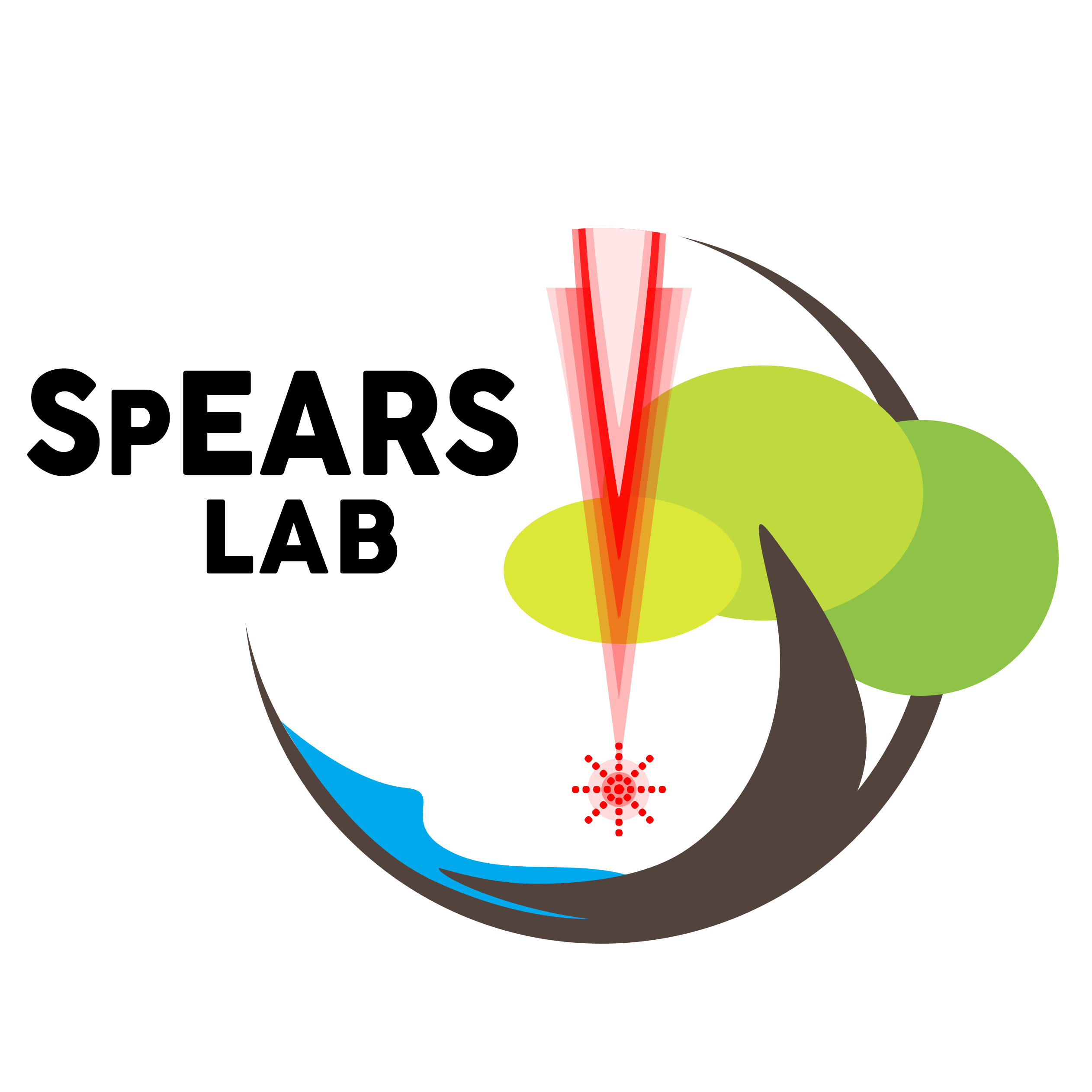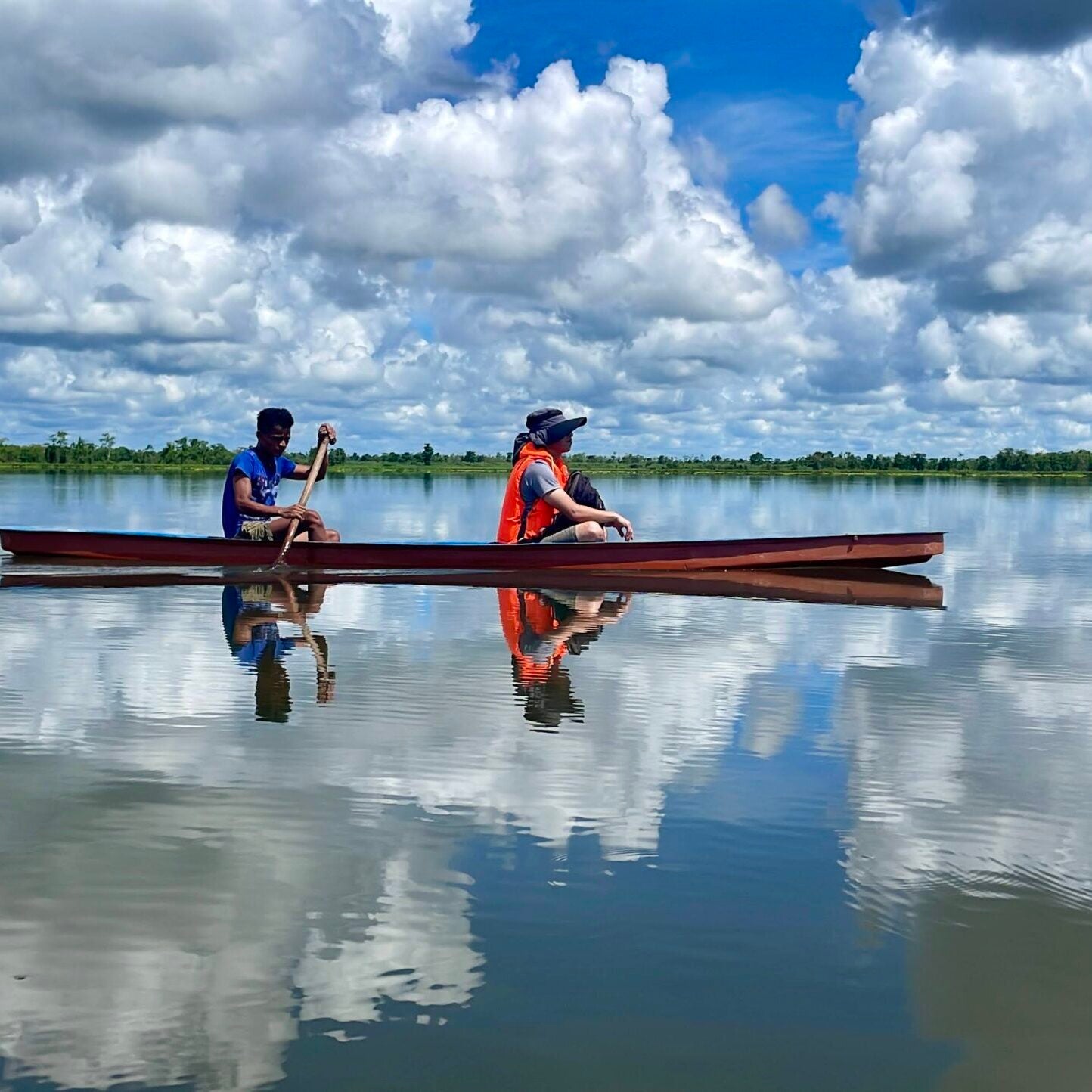Our Research Themes
Our Labs

AEC

PEEB

SpEARS

LAPIS

AEC

SpEARS

PEEB









Khairun Nisha Binte Mohamed Ramdzan, Zu Dienle Tan, Leah Mary Lilly Denoun, H. Manjari Jayathilake, Annabel Jia Yi Lim, Yiwen Zeng, Hao Tang, and Lian Pin Koh
Centre for Nature-based Climate Solutions, Faculty of Science, National University of Singapore
Final Report
Calculating forest carbon using forest inventory measurements can be laborious, mainly when conducted across an entire forest. As a result, reliance on traditional ground-based methods alone may not provide comprehensive forest information at a broad spatial scale. Instead, remote sensing technologies such as LiDAR (Light Detection and Ranging) and satellite imagery offer invaluable tools for gathering forest information, including tree heights and canopy structure, across vast landscapes. This project incorporated remote sensing technologies and field measurements to pave the way for a cost-effective means of surveying and monitoring nature-based carbon projects. It provides a preliminary estimate of carbon for different forest ecosystem types across Singapore and demonstrated the use of remote sensing technology for potential monitoring of forest aboveground carbon density (ACD). Further, the findings show that remote sensing technology can scale up field measurements and estimate spatially explicit carbon over a larger area. These carbon maps offer valuable insights into carbon sequestration potential, allowing stakeholders from diverse fields to make informed decisions on nature-based solution projects.
Published March 2024Valerie Hagger, Thomas A. Worthington, Catherine E. Lovelock, Maria Fernanda Adame, Tatsuya Amano, Benjamin M. Brown, Daniel A. Friess, et al.
Nature Communications
This paper assesses the relationship between socioeconomic and biophysical variables and mangrove change across coastal geomorphic units worldwide from 1996 to 2016. Globally, this paper finds that drivers of loss can also be drivers of gain, and that drivers have changed over 20 years.
Published October 2022Daniel A. Friess, Yasmine M.Gatt, Tze Kwan Fung, Danwei Huang, Valerie Kwan, Kiah Eng, Lian Pin Koh, et al.
Landscape and Urban Planning
The ability of vegetated coastal ecosystems to sequester high rates of “blue” carbon over millennial time scales has attracted the interest of national and international policy makers as a tool for climate change mitigation. The experiences of Singapore show that coastal ecosystems and their blue carbon stocks can be successfully managed along an urban coastline, and can help inform blue carbon science and management along other rapidly urbanizing coastlines throughout the tropics.
Published October 2022Farid Dahdouh-Guebas, Daniel A. Friess, Catherine E. Lovelock, Rod M. Connolly, Ilka C. Feller, Kerrylee Rogers, and Stefano Cannicci
Nature Plants
This paper identified the function of mangrove ecosystems that underpin ecosystem services, their responses to extreme weather and climatic events, and their role as crucial social-ecological systems as important paradigms shaping mangrove research now and in times to come.
Published October 2022Valerie Kwan, Jenny Fong, Chin Soon Lionel Ng, Danwei Huang
Science of The Total Environment
Blue carbon ecosystems are a vital part of nature-based climate solutions due to their capacity to store and sequester carbon, but often exclude macroalgal beds even though they can form highly productive coastal ecosystems. This study demonstrates that macroalgal seasonality allows for a consistent amount of biomass carbon to either be exported and eventually sequestered, or harvested for utilization on an annual basis.
Published July 2022Daniel A. Friess, Yasmine M. Gatt, Rio Ahmad, Benjamin M. Brown, Frida Sidik, Dominic Wodehouse
One Earth
There are ambitious plans to restore hundreds of thousands of hectares of mangrove forests over the next 5 years to restore habitats and mitigate climate change. However, if not properly planned, such actions have the potential to fail. This paper outlines a transdisciplinary plan for mangrove restoration based on strong scientific principles.
Published May 2022Zu Dienle Tan, Roman Carrasco, Sigit Sutikno, David Taylor
Environmental Research Letters
Decisions over restoration must balance limited resources, land constraints, and competing demands. Peatlands in Southeast Asia have been heavily impacted by agricultural expansion over the past three decades, with Indonesia now accounting for a substantial proportion of degraded tropical peatlands globally. The results, although indicative, support tropical peatland restoration as a cost-efficient strategy for mitigating climate change, reducing fire, conserving biodiversity, and supporting sustainable development that can be offset by carbon prices of USD 2–37/Mg CO2e.
Published May 2022Peter I. Macreadie, Micheli D. P. Costa, Trisha B. Atwood, Daniel A. Friess, Jeffrey J. Kelleway, Hilary Kennedy, Catherine E. Lovelock, Oscar Serrano, Carlos M. Duarte
Nature Reviews Earth Environment
Blue carbon ecosystems (BCEs) store carbon and provide co-benefits such as coastal protection and fisheries enhancement. Blue carbon sequestration has therefore been suggested as a natural climate solution. This review examines the potential for BCEs to act as carbon sinks and the opportunities to protect or restore ecosystems for this function.
Published November 2021Jie Su, Daniel A. Friess, Alexandros Gasparatos
Nature Communications
Mangrove restoration has become a popular strategy to ensure the critical functions and economic benefits of this ecosystem. This study conducts a meta-analysis of the peer-reviewed literature on the outcomes of mangrove restoration.
Published August 2021Tessa Mazor, Daniel A.Friess, Peter A.Todd, Danwei Huang, Nhung T.H.Nguyen, Megan I.Saunders, Rebecca K.Runting, Ryan J.Lowe, PaulaCartwright, James P.Gilmour, Catherine E.Lovelock
One Earth
Coastal areas are urbanizing rapidly, currently supporting >40% of the world's population. Yet, coastal cities are facing greater vulnerability to climate-change-related hazards, causing significant social and economic disruptions. Investing in the protection of existing coastal habitats is considered a low-cost nature-based solution with co-benefits for society and biodiversity. This study examines the global applicability of this solution across 5,096 coastal urban areas in tropical and subtropical regions.
Published July 2021Rik Gijsman, Erik M. Horstman, Daphne van der Wal, Daniel A. Friess, Andrew Swales, Kathelijne M. Wijnberg
Frontiers in Marine Science
Integration of mangroves in projects to reduce coastal flood risk is increasingly being recognised as a sustainable and cost-effective alternative. The implementation of mangroves in flood risk reduction, however, remains complex. This paper reviews existing evidence, monitoring techniques and modelling approaches from the viewpoint of mangrove functionality and persistence.
Published July 2021Yiwen Zeng, Daniel A.Friess, Tasya Vadya Sarira, Kelly Siman, Lian Pin Koh
Current Biology
Despite the outsized role of mangrove forests in sustaining biodiversity, ecosystem function, and local livelihoods, the protection of these vital habitats through blue carbon financing has been limited. This paper quantifies the extent of this missed conservation and financial opportunity, showing that the protection of ∼20% of the world’s mangrove forests (2.6 Mha) can be funded through carbon financing.
Published April 2021Maria F. Adame, Rod M. Connolly, Mischa P. Turschwell, Catherine E. Lovelock, Temilola Fatoyinbo, David Lagomasino, Liza A. Goldberg, Jordan Holdorf, Daniel A. Friess, Sigit D. Sasmito, Jonathan Sanderman, Michael Sievers, Christina Buelow, J. Boone Kauffman, Dale Bryan-Brown, Christopher J. Brown
Global Change Biology
Mangroves have among the highest carbon densities of any tropical forest. Incorporating mangroves into Nationally Determined Contributions to the Paris Agreement and their valuation on carbon markets requires predicting how the management of different land-uses can prevent future greenhouse gas emissions and increase CO2 sequestration. This paper integrates comprehensive global datasets for carbon stocks, mangrove distribution, deforestation rates, and land-use change drivers into a predictive model of mangrove carbon emissions.
Published February 2021Weng Ngai Lam, Jun Jie Lian, Pin Jia Chan, Ying Ying Ting, Rie Chong, Nur Estya Rahman, Lorraine Wen Ai Tan, Qian Yi Ho, Sorain J. Ramchunder, Kelvin S.-H. Peh, Yixiong Cai, Kwek Yan Chong
Biotropica
Decomposition is a key ecosystem function, and the rate of decomposition in forests affects their carbon storage potentials. Processes and factors determining leaf litter decomposition rates in dry-land and temperate forests are well understood, but these are generally poorly studied in tropical wetland forests, especially freshwater swamp forests (FSF). This study collected leaf litter from swamp and non-swamp tree species in a tropical FSF in Singapore and monitored the decomposition rates of these in swamp and non-swamp plots for a period of eight months.
Published January 2021Allie Goldstein, Will R. Turner, Seth A. Spawn, Lian Pin Koh et al.
Nature Climate Change
Avoiding catastrophic climate change requires rapid decarbonization and improved ecosystem stewardship. To achieve the latter, ecosystems should be prioritized by responsiveness to direct, localized action and the magnitude and recoverability of their carbon stores. This paper shows that a range of ecosystems contain ‘irrecoverable carbon’ that is vulnerable to release upon land use conversion and, once lost, is not recoverable on timescales relevant to avoiding dangerous climate impacts.
Published March 2020